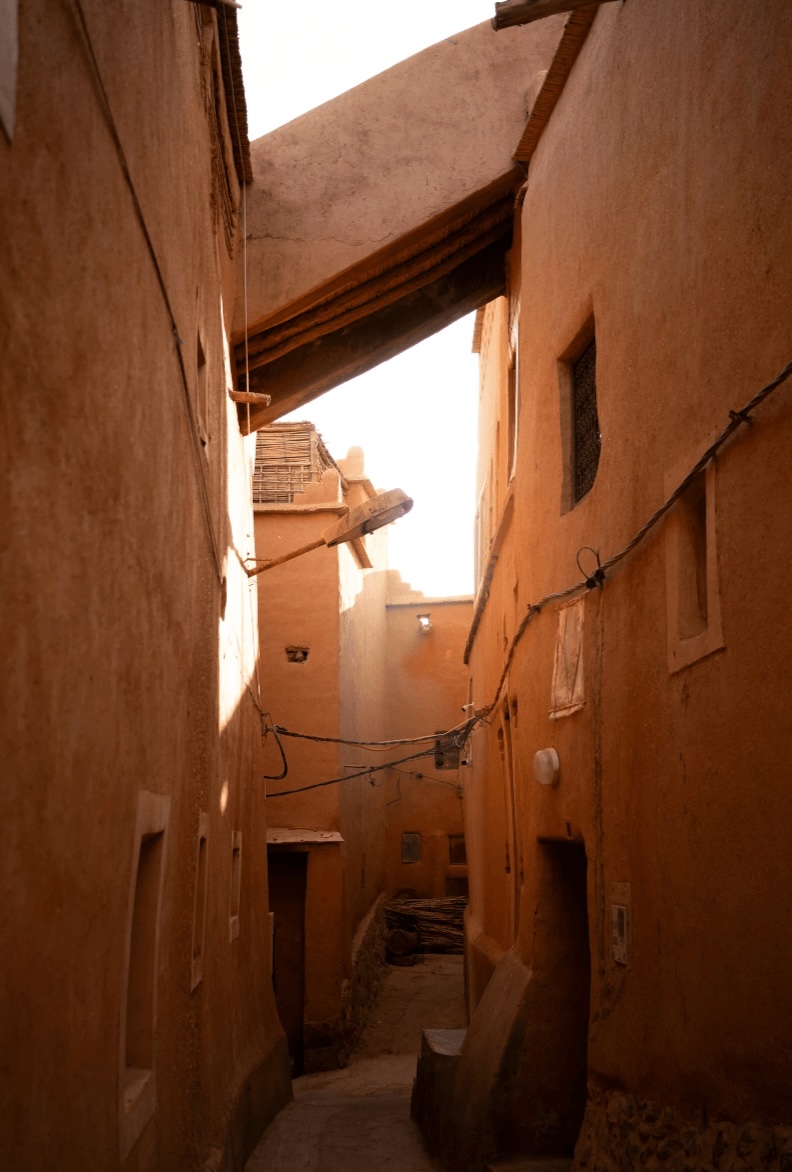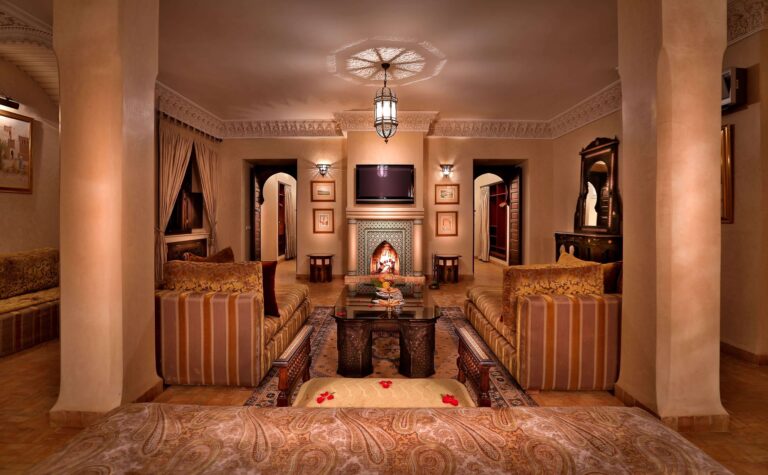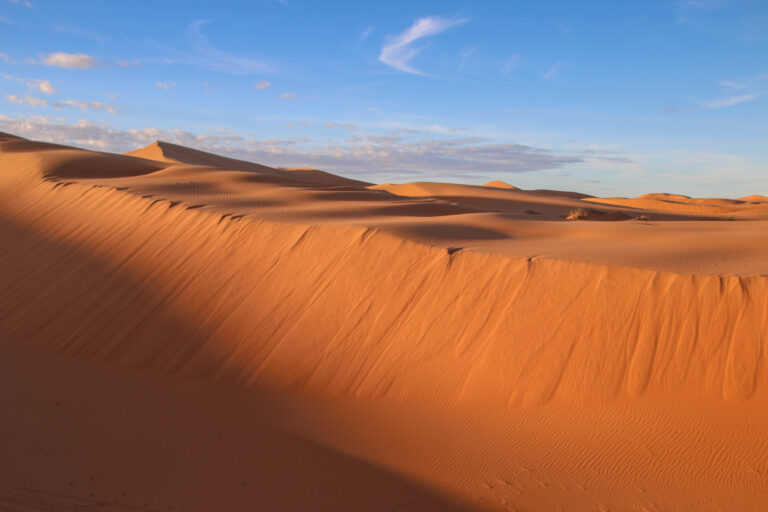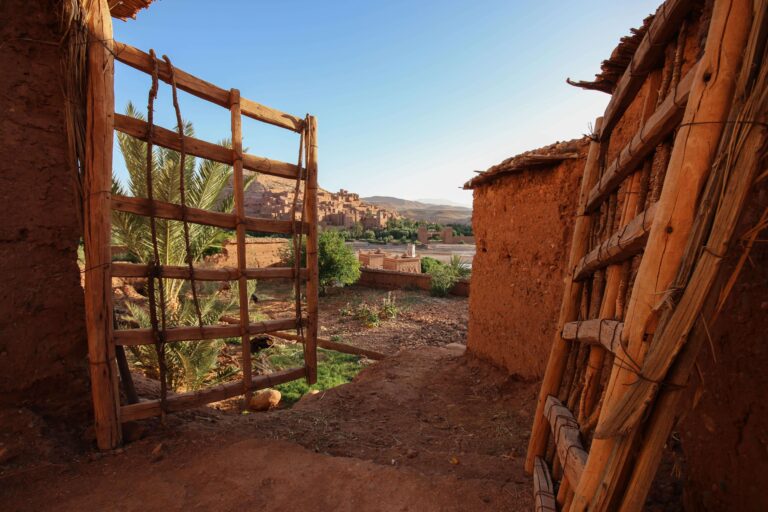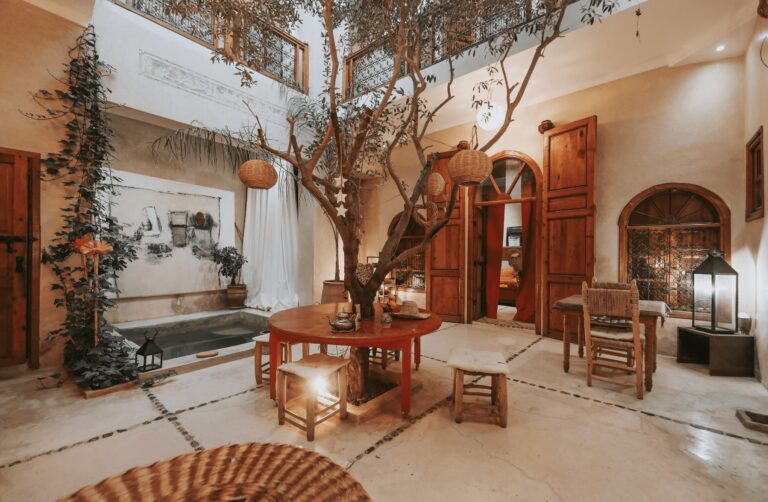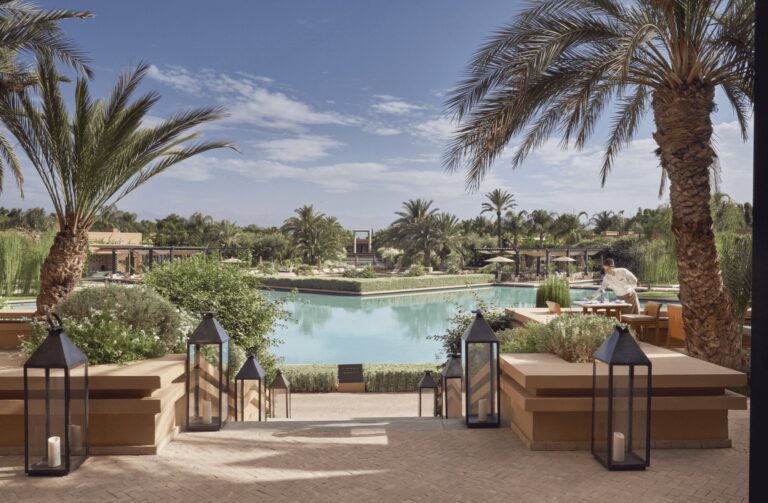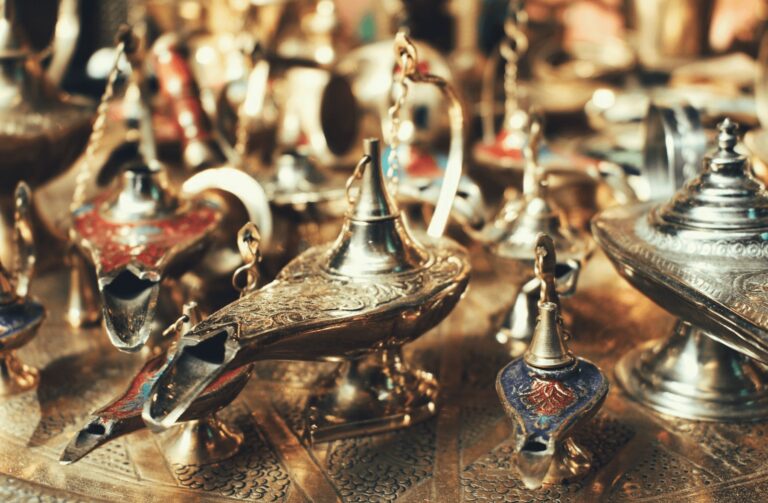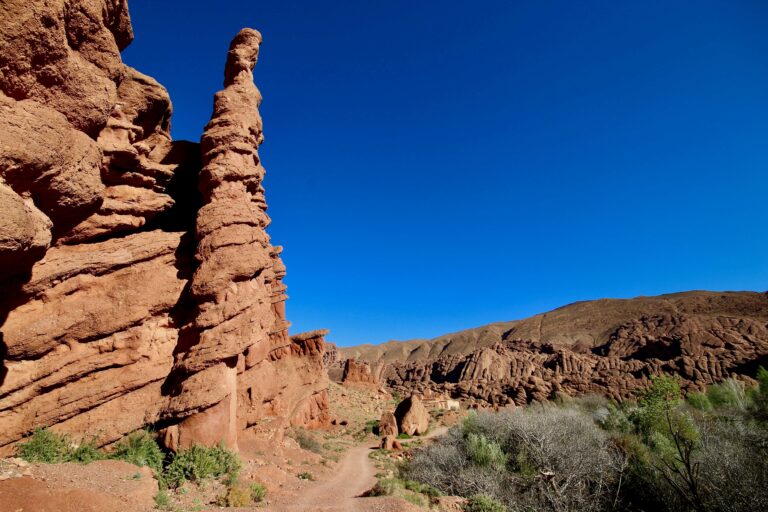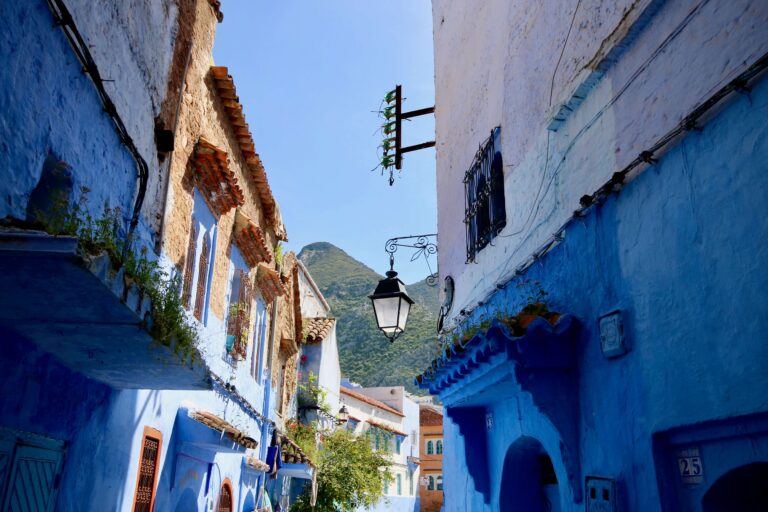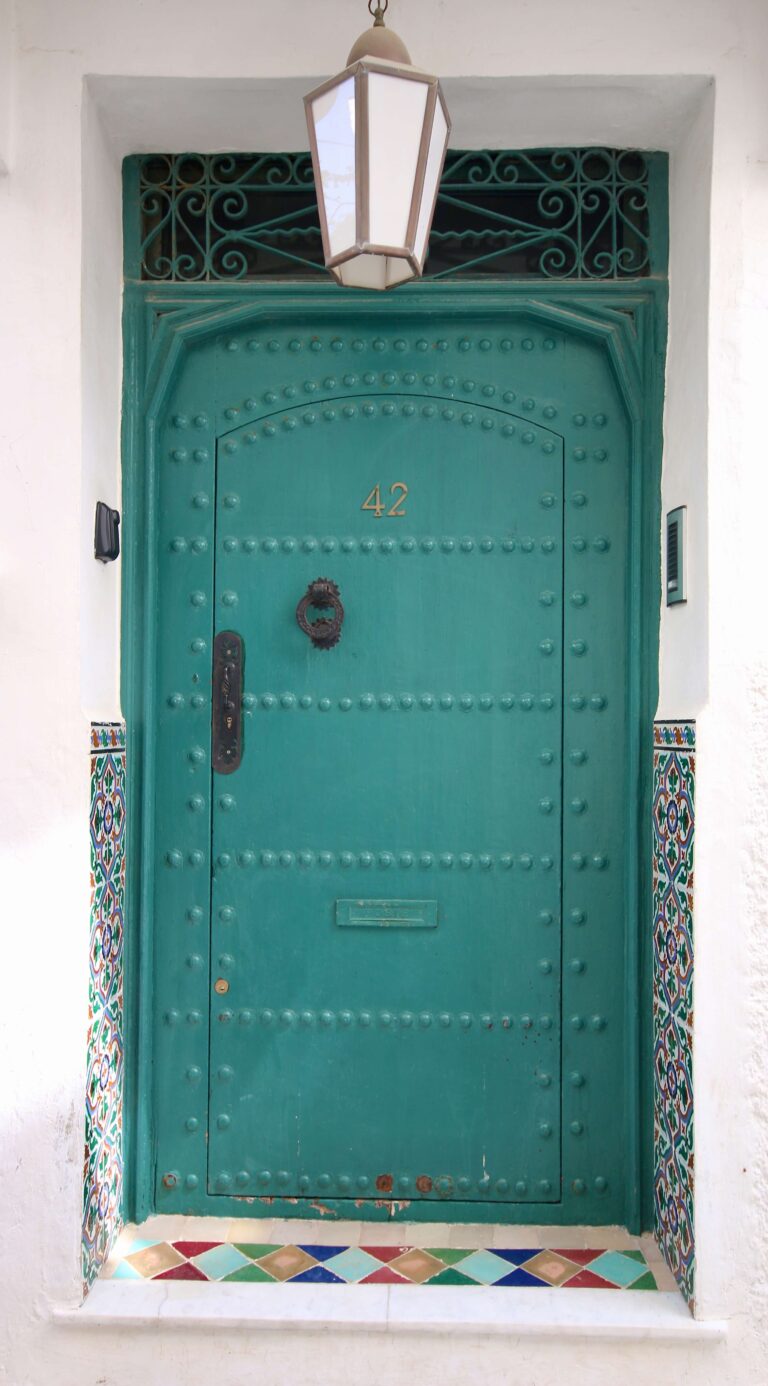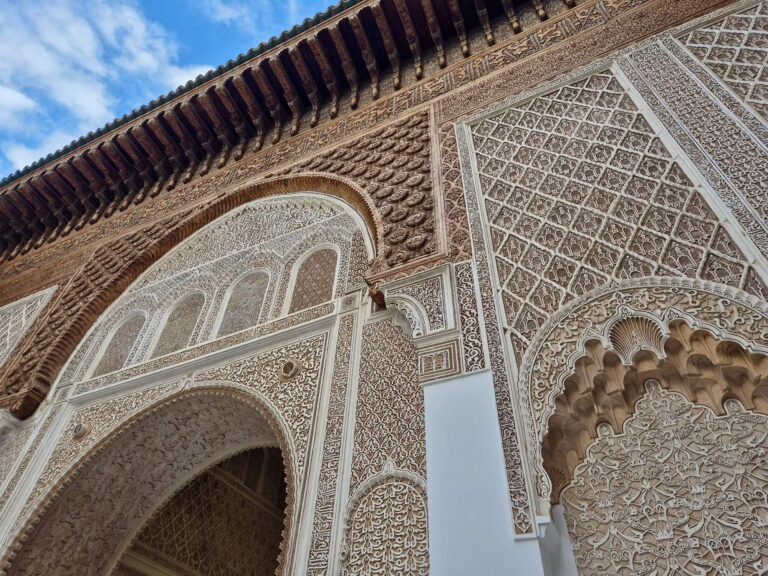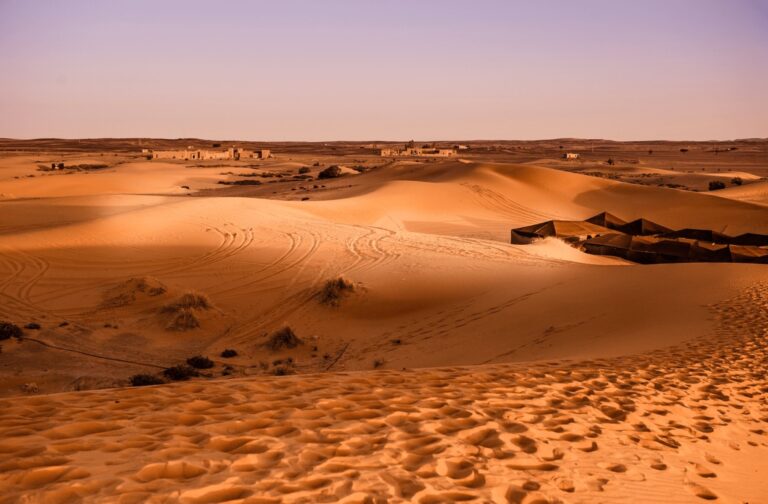6 Best Museums in Ouarzazate (and Beyond)
From legendary film studios to centuries-old kasbahs, discover 6 of the best museums in Ouarzazate.
This remote desert oasis has long enchanted and inspired all who visit, drawing them in with its timeless allure. Centuries-old kasbahs and ksours (mud-brick fortified villages) dot Ouarzazate and its surroundings. They stand as reminders of a cultural heritage that stretches back generations.
The area’s cinematic appeal is equally captivating. Ouarzazate’s stunning desert backdrops have provided the setting for countless films, from classic Hollywood productions to modern blockbusters.
There’s no better way to “discover” Ouarzazate than by visiting some of its intriguing museums, focused on everything from culture to cinema and Amazigh traditions.
In this list of the best museums in Ouarzazate, I’ve included places within the city itself and the immediate surroundings, as well as a little further afield but reachable as a day trip.
To learn more about visiting this desert city, check out my Essential Travel Guide to Ouarzazate.
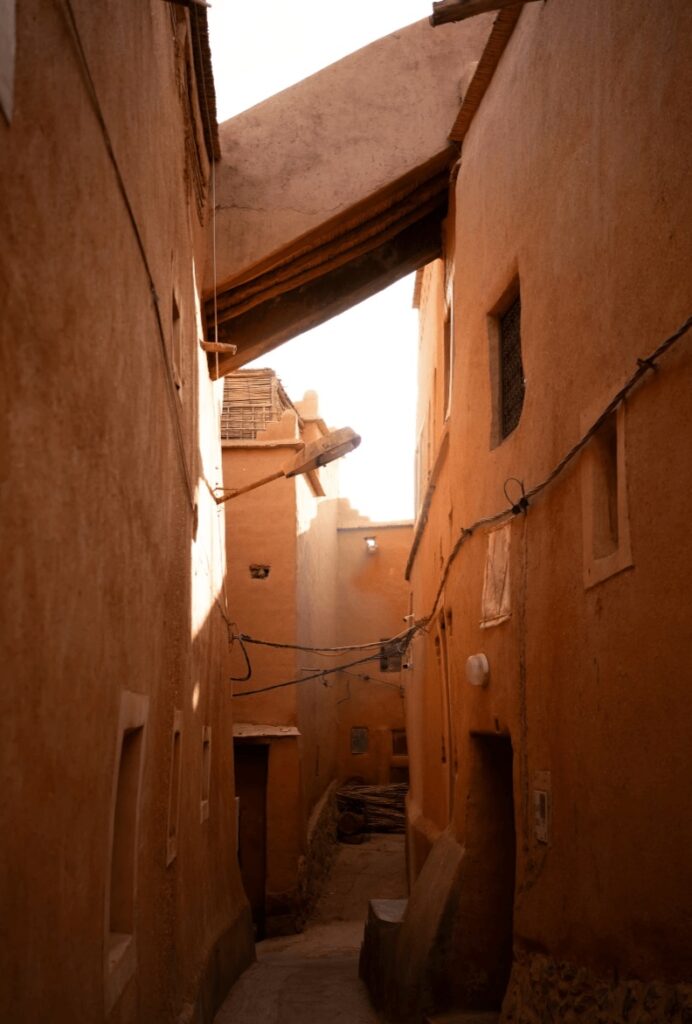
Disclosure: This article contains affiliate links, meaning I earn a small commission when you make a purchase. Affiliate links cost you nothing and ensure my content stays free!
Kasbah Taourirt
This beautifully restored kasbah used to be the residence of the influential Glaoui family. They dominated trade in the Drâa and Dades valleys throughout the 19th and 20th centuries. However, its roots go back even further to the 17th century when the Imzwarn family first built the kasbah.
In the 1980s, people started working to save this unique piece of Morocco’s cultural heritage. Today, thanks to UNESCO, some sections of have been beautifully restored and it’s now one of the best museums in Ouarzazate.
Strolling through the kasbah (which is still inhabited by several local families), you can almost picture what life was like here ages ago. Largely constructed from rammed earth, the complex is notable for its projecting balconies, entrance courtyard and tataoui ceilings made from woven reed.
During your visit, you can discover the story of Thami El Glaoui, the old Pasha of Marrakech. He roamed these halls back in the French colonial days. It’s also an opportunity to uncover the cultural history of the region’s Amazigh communities.
Not to miss is the former qa’id’s residence. Here you’ll find decorative stucco work and wall paintings that are reminiscent of the architecture of Morocco’s imperial cities.
Opening hours of Kasbah Taourirt: 8 am to 5 pm
Entrance fee for Kasbah Taourirt: 20 dh
If you’re interested in learning more about Morocco’s earthen architecture, check out my article Exploring the Route of 1,000 Kasbahs.
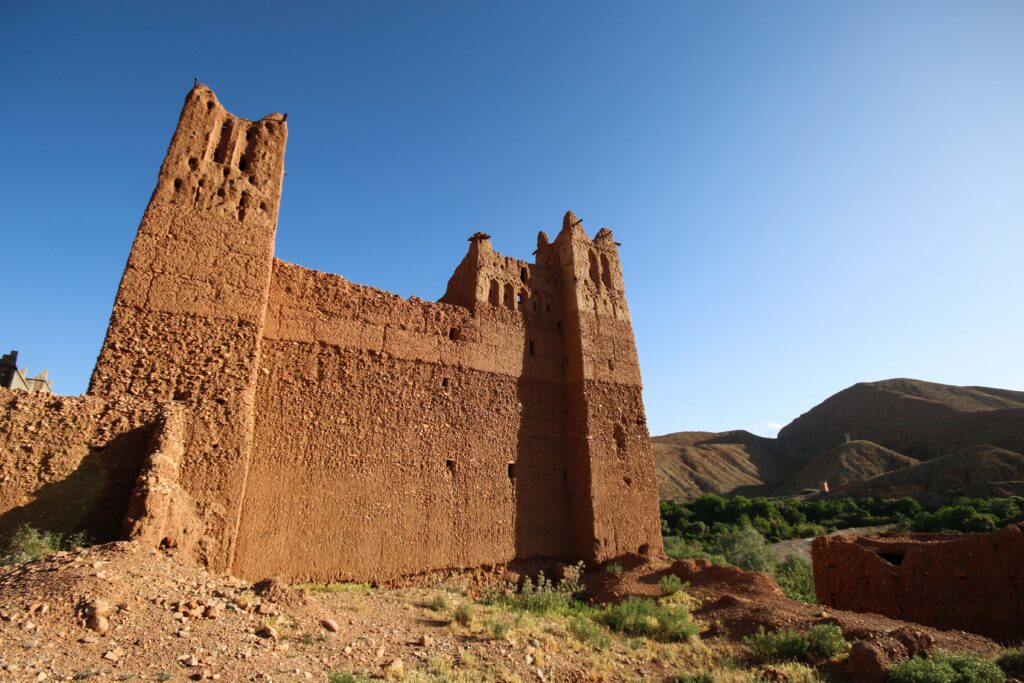
Cinema Museum
Occupying a former studio, this small museum celebrates the rich history and artistry of filmmaking in Ouarzazate. It is located opposite the Taourirt Kasbah (a 17th-century fortified residence).
The Cinema Museum is a good alternative if you aren’t able to get to the Atlas Film Corporation Studios on the outskirts of town.
The museum’s exhibition halls offer a chronological journey through the evolution of cinema, from the silent era to the present day.
Adorning the spaces is an impressive collection of costumes, props and cinematic equipment. Many were recovered from the legendary film productions that have taken place in Ouarzazate’s Atlas Studios.
The only downside to the Cinema Museum is the lack of information about the props on display. It’s best to grab a guide if you want a more immersive experience.
Alternatively, you can let your imagination run wild and have a lot of fun taking photographs. You can even create your own miniature films in front of the vintage sets.
Opening hours of the Cinema Museum: 10 am to 5 pm (closed Sundays)
Entrance fee for the Cinema Museum: 30 dh
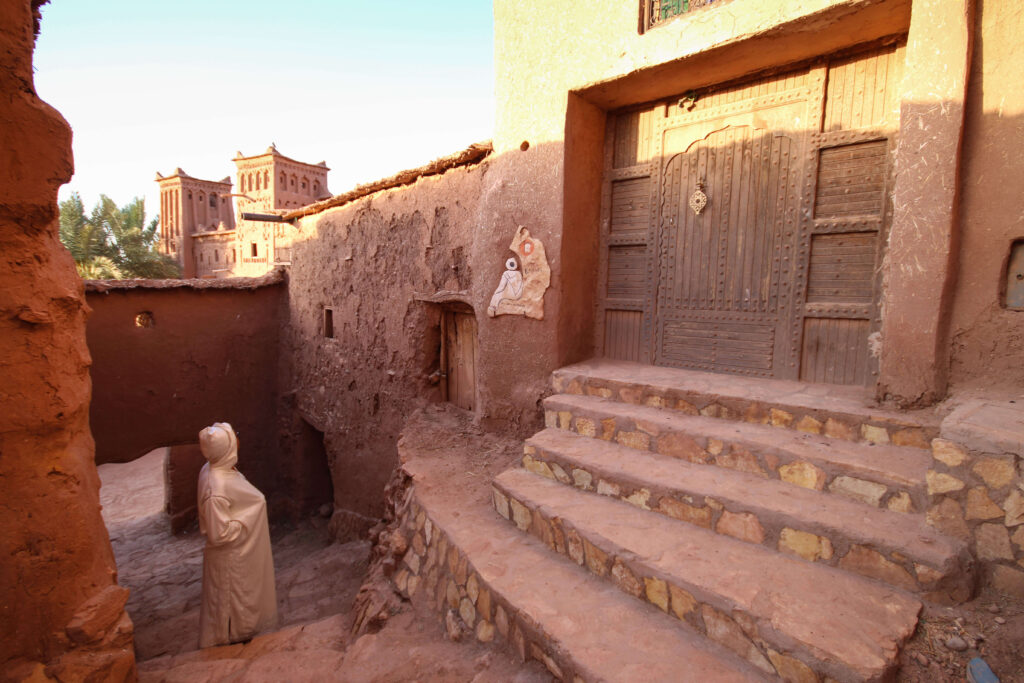
Atlas Film Corporation Studios
If you’re a film buff, it’s worth making the journey out to the Atlas Film Corporation Studios. The complex lies in the middle of the desert around five kilometres from Ouarzazate.
Founded by Mohammed Belghimi in 1983, the studios have helped bring to life some of cinema’s most iconic films. These include big names such as “Gladiator”, “Jewel of the Nile” and “Kundun”.
On a guided tour of the Atlas Studios (they depart every 20 to 40 minutes), you’ll get to explore behind the scenes. It’s a great opportunity to see some of the sets and soundstages used in these famous flicks. Plus, you’ll gain insight into the inner workings of a major film studio.
On a visit to the Atlas Film Studios, you’ll also get an up-close view of some of the elaborate set designs that help transport audiences to different times and places.
If you’re lucky, you may even stumble upon an active shoot in progress. There’s the opportunity to watch real actors busy at work. After exploring the backstage areas and hearing anecdotes from the guides, you can browse the onsite souvenir shop.
If you’re a film buff visiting Morocco, this is definitely one of the best museums in Ouarzazate.
Top tip:
A half-hour walk from the studios leads to the full-scale fortress town that served as the backdrop for “Kingdom of Heaven” – a testament to the studio’s commitment to authenticity and attention to detail.
Opening hours of the Atlas Film Corporation Studios: 8:30 am to sunset
Entrance fee for the Atlas Film Corporation Studios: 80 dh
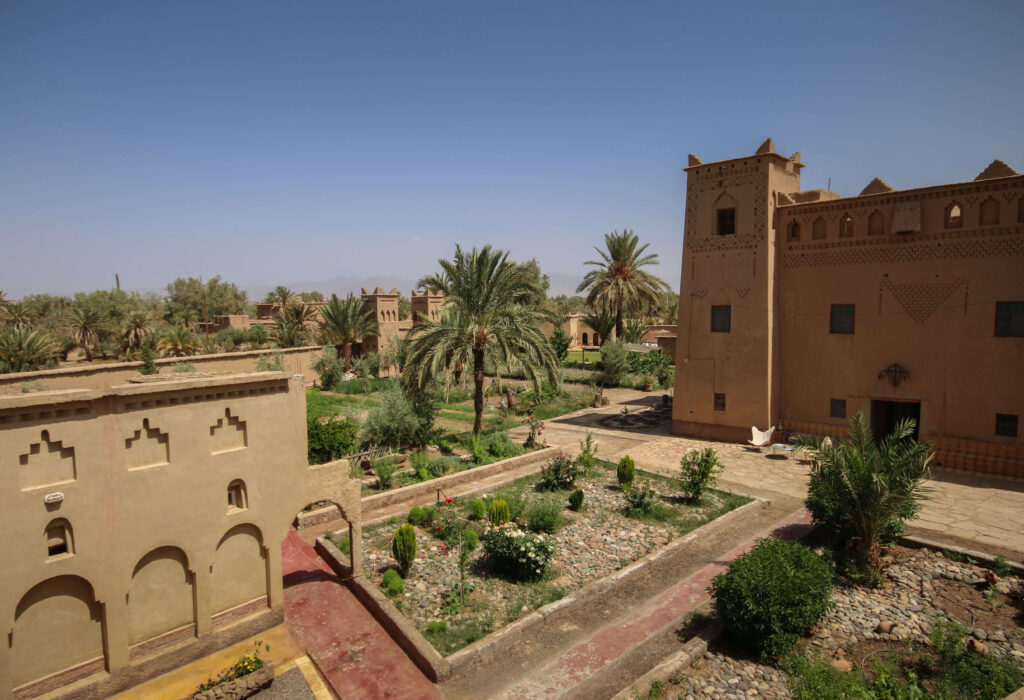
Musée Memoire de Ouarzazate
Nestled amidst the Skoura palmeraie lies this kasbah-turned-museum. It offers a unique glimpse into the cultural heritage of the region’s indigenous Amazigh people.
The curated exhibition space is helmed by the anthropologist Abdelmoula El Moudahab. His encyclopaedic knowledge and passionate storytelling bring the artefacts to life.
Highlights of the collection include a marriage document written in saffron and an assortment of ingeniously crafted door locks.
Keep an eye out for the detailed architectural drawings that reveal the methods used in the construction of a traditional kasbah. These are the fortified, mud-brick citadels that have long dotted the Moroccan landscape.
Beyond its role as one of the best museums in Ouarzazate, this kasbah also doubles as a performance space. It regularly hosts cultural events that showcase the living traditions of the Amazigh people.
The Musée Memoire can easily be visited while driving from Ouarzazate to the Dades and Todra gorges. However, I’d highly recommend spending a night in one of Skoura’s beautiful kasbah hotels.
Opening hours of the Musée Memoire de Ouarzazate: 9 am to 5 pm
Entrance fee for the Musée Memoire de Ouarzazate: Donation
Museum of Arts and Traditions of the Draa Valley
On the outskirts of Zagora, Ksar Tissergate is a 16th-century fortified village. It continues to be home to local families today.
The ksar also hosts the Museum of Arts and Traditions of the Drâa Valley, dedicated to preserving the cultural heritage of the region. The ochre-coloured walls and buildings of Ksar Tissergate create a striking visual contrast against the surrounding palmeraie.
From Amazigh and Tuareg jewellery to the tools and implements used in daily agriculture, each object provides a window into life amidst this desert landscape. The traditional dress of the region is especially fascinating. The men’s distinctive gandoura robes and feroual headdresses contrast beautifully with the graceful izar and malhfa gowns worn by the women.
In my opinion, a guided tour is highly recommended to fully appreciate the depth and significance of the museum’s collection. It will also help you to navigate the ksar’s labyrinth of narrow streets, earthen houses and shared granaries. They are designed in a layout that reflects the community-oriented nature of life here.
Opening hours of the Museum of Arts and Traditions of the Drâa Valley: 8:30 am to 7 pm
Entrance fee for the Museum of Arts and Traditions of the Drâa Valley: 25 dh
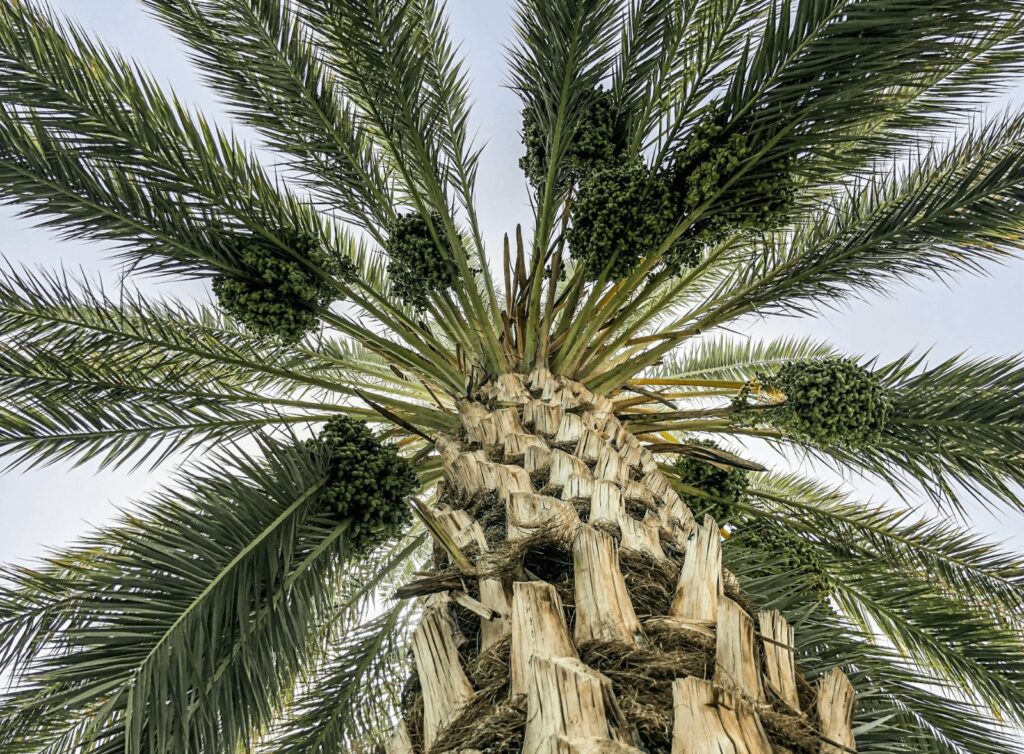
Kasbah des Caids
Part museum, part hotel – this ancient kasbah in the village of Tamnougalt is unique. You can visit it by day, then stay overnight.
Dating from the 16th century, it served as an administrative hub and residential quarters for the leaders of the Mezguita tribe. Later, it was used as a film set for the “Prince of Persia”, “The Mummy” and “Babel”.
One of the best ways to experience this architectural marvel is to join a guided tour. These are led by a direct descendant of the original qaid, or chief, Hassan, who can provide insights into the kasbah’s storied past.
As you wander through the winding corridors, you’ll visit the qaid’s former office, the hammam (traditional bathhouse) and the residential area that once housed over 300 families.
If you opt to stay overnight, you’ll get to experience the warm hospitality of Hassan and his family. They also run everything from cooking classes to nightly drumming. Tamnougalt lies roughly halfway between Zagora and Ouarzazate, making it an ideal overnight stop if you’re exploring Morocco’s Route of 1,000 Kasbahs.
Opening hours of the Kasbah des Caids: 10 am to 6 pm
Entrance fee for the Kasbah des Caids: Donation/tip for the guide

PLAN YOUR TRIP WITH MY FAVOURITE RESOURCES:
Find hotels via Booking
Book tours and attractions via Viator or GetYourGuide
Find a rental car via Discover Cars
Book flights via Kiwi or Booking
Search for buses and trains via 12Go or Omio
Get travel insurance via SafetyWing
Buy a digital eSIM with Airalo
By purchasing through my links, you’ll be supporting my website at no additional cost to you
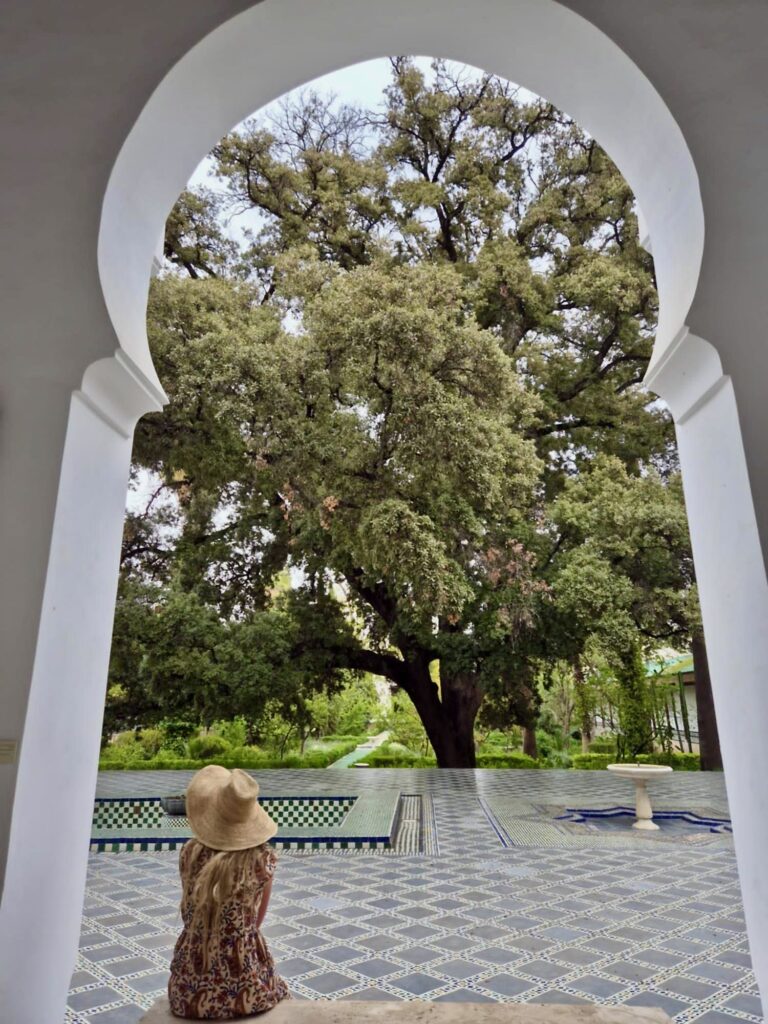
About Me
I’m Malika, a global traveller who first visited Morocco in 2014 before marrying a local and settling down in a little village on the Atlantic coast. Over the years, I’ve developed an intense love for Morocco, its incredible landscapes, storied cities and the exceptionally generous hospitality of its people.
Malika in Morocco is a place to share my years of experience exploring the country, from north to south and from the Atlantic Ocean to the Sahara Desert. As a resource for travellers visiting Morocco, I want to encourage others to experience this captivating destination the way they desire, whether that’s independently or under the expert guidance of local tour operators.
I believe strongly in supporting responsible and sustainable tourism initiatives while inspiring travel experiences that are life-impacting and mutually beneficial for both travellers and locals.
-
9 Best Family Hotels in Marrakech for a Kid-Friendly Stay
Looking for the best family hotels in Marrakech? Explore this curated collection of riads, resorts and apartments that cater to travellers visiting Morocco with kids. There’s no denying it – Marrakech is an incredible destination and one of Morocco’s most popular places to visit. But it can also be an assault on the senses and…
-
Stunning 5-Star Marrakech Hotels for a Luxe Stay in the “Red City”
Looking for the best 5-star Marrakech hotels? Discover 10 incredible places to indulge in a high-end stay in Morocco’s “Red City”. There’s no denying it – Marrakech is an irresistible getaway. It’s located a short flight from many European destinations but with the feeling of being a world away. In my opinion, this historic North…
-
5 Unforgettable Tours to the Sahara Desert from Marrakech
Looking for the best tours to the Sahara from Marrakech? Explore this curated collection of multi-day Moroccan desert trips, including budget-friendly small group adventures and private desert tours in Morocco. Spending a night under the star-studded sky of the Saharan desert is an amazing experience. It’s something that I’ve been lucky enough to do. The…
-
7 Best Places to Stay in Ait Benhaddou: Morocco’s Ancient Ksar
Looking for the best places to stay in Ait Benhaddou? Explore this curated collection of auberges, guesthouses and hotels, all within easy reach of the UNESCO World Heritage-listed ksar. Set against the dramatic backdrop of the High Atlas Mountains lies the fortified ksar of Ait Benhaddou – an ancient walled city that is now designated as…
-
10 Best Budget Riads in Marrakech: Morocco’s “Red City”
Looking for the best budget riads in Marrakech? Discover 10 incredible places to stay if you’re planning an affordable trip to Morocco’s “Red City”. Every time I visit Marrakech, I like to find a new riad to stay in. Considering the city’s abundance of options, I think it will be a never-ending quest! I love…
-
5 Best Luxury Hotels in Marrakech with a Pool
Looking for the best luxury hotels in Marrakech with a pool? Explore this curated collection of riads, resorts and boutique stays. All boast a swimming pool for cooling off in Morocco’s “Red City”. Framed by the Atlas Mountains, Marrakech is deservedly one of Morocco’s top tourist destinations. But it can also become a sweltering cauldron…
